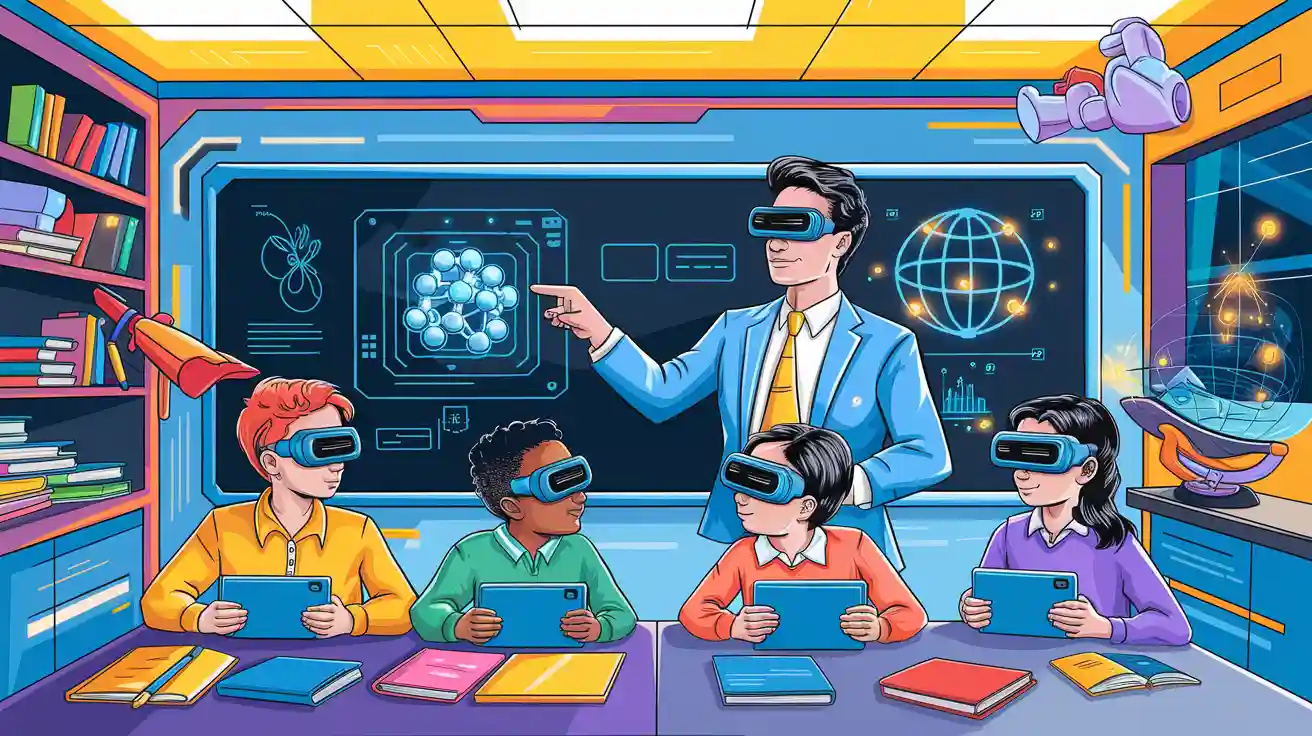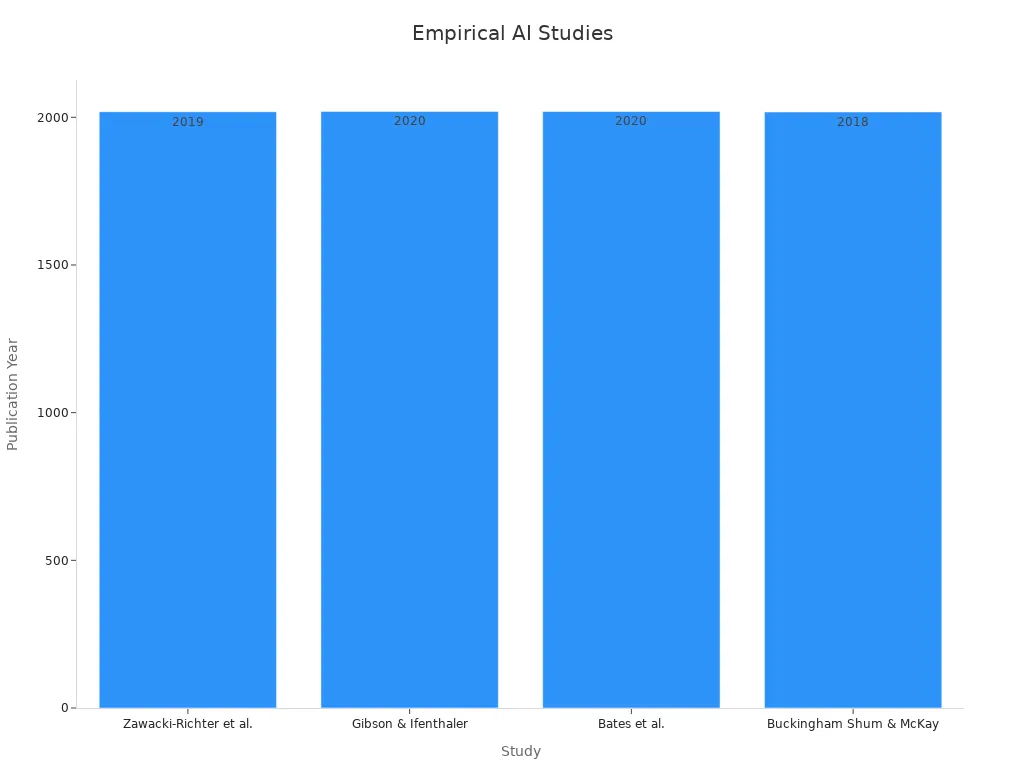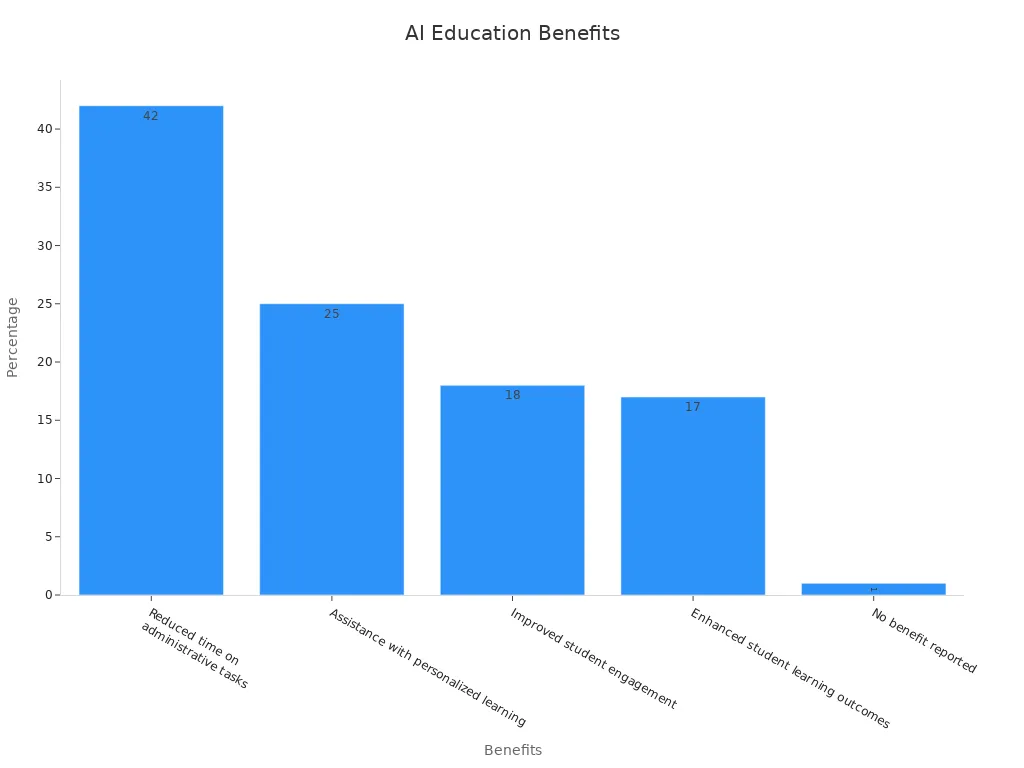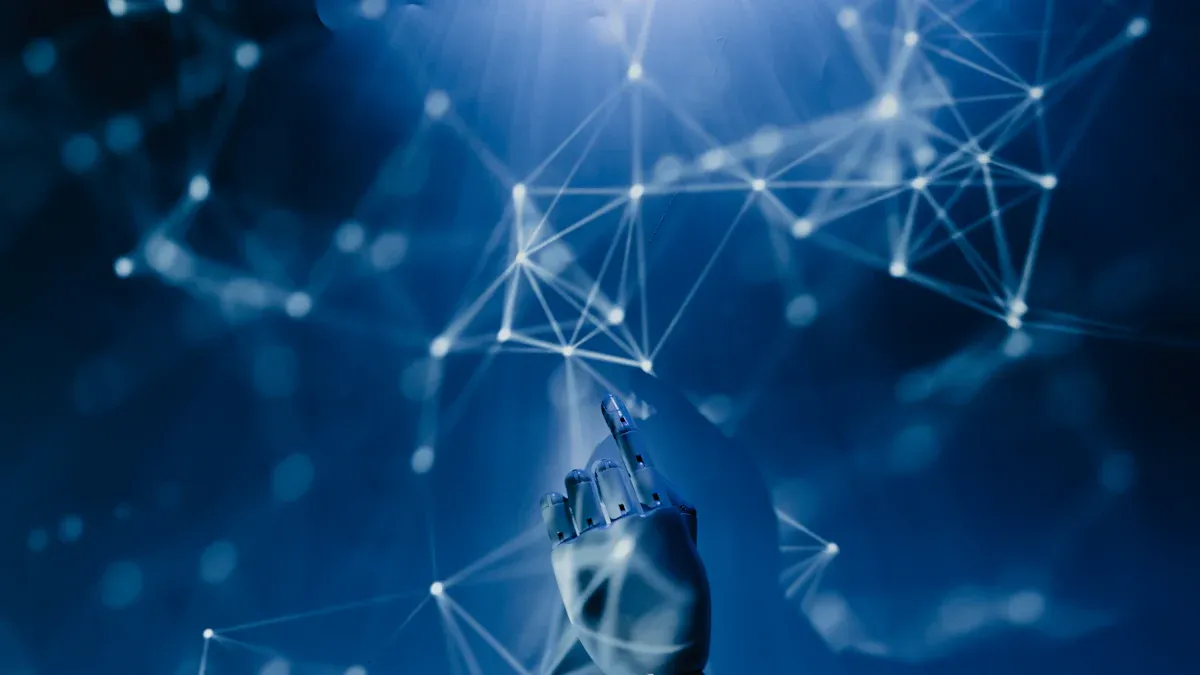How AI is Shaping the Future of Education and Teaching Methods

Artificial intelligence is transforming how individuals learn and teach. It tailors lessons to suit each student’s needs. AI and education now collaborate to create a more personalised learning experience. For instance, students utilising AI tools learn 28% more effectively than with traditional methods. These tools also simplify administrative tasks, reducing costs by 32%. This enables teachers to dedicate more time to teaching.
AI complements traditional teaching methods to make learning engaging and efficient. Research indicates that AI assists students in achieving better academic results while studying less. Tools such as smart tests enhance feedback, aiding students in their development. However, as AI evolves, the roles of teachers are also changing. They must adapt to incorporate new technology in classrooms, such as those offered by Suited Tutor and Suited Tutor Courses.
Key Takeaways
AI changes lessons to match what each student needs. This helps students stay interested and do better in school.
Teachers spend less time on paperwork with AI. This gives them more time to teach and help students.
AI tools give quick feedback. This helps students fix mistakes fast and feel more confident.
AI makes learning easier for everyone, even for students with disabilities. It ensures all students get the same chances to learn.
In the future, AI will be used more in schools. It will make learning faster and more fun for students everywhere.
Understanding AI and Education
Defining AI in Education
Artificial intelligence in education uses smart computer systems to improve learning. These systems study data, adjust to how you learn, and give personal help. Unlike old teaching ways, AI offers resources that fit your needs. For example, apps like Duolingo change lessons based on how well you're doing. This keeps you interested and helps you stay on track.
AI also helps by doing boring tasks for teachers. It can mark homework, check progress, and even guess future results. This means teachers can spend more time teaching and less time on paperwork. With AI in schools, learning becomes faster and more suited to each student.
The Role of AI in Transforming Education
AI is changing education by making it easier, fun, and useful. It helps you work with classmates on projects and get quick feedback. AI tools also make learning enjoyable with games and activities. These tools encourage you to join in and think creatively, so learning feels less boring.
AI also creates lessons that match different learning needs. It teaches important skills like problem-solving and logical thinking. For students with special needs, AI gives extra help so no one is left out. This shows how AI is more than a tool—it’s changing how we learn today.
Here are some ways AI is improving education:
AI tools check your skills and adjust lessons to suit you.
Automated marking gives teachers more time to help students.
Fun platforms like Suited Tutor Courses make learning exciting and improve behaviour.
Key AI Technologies in Education
Many AI technologies are shaping how we learn. These include machine learning, language understanding, and studying learning patterns. Each one helps students and teachers in different ways.
How AI Helps in Education | What It Does |
|---|---|
Predicting School Results | AI checks past grades to help you improve. |
Better Teaching and Learning | AI tools make lessons more helpful, especially in colleges. |
Ethical Questions | Experts study the fairness of using AI in schools. |
Studies show how AI is changing education over time. For example, Zawacki-Richter et al. reviewed how AI is used in colleges. Buckingham Shum & McKay looked at problems with using AI in real classrooms. These studies remind us to understand both the good and bad sides of AI.

As AI grows, it will play an even bigger role in schools. From online tutors to smart learning tools, these ideas aim to make learning better for everyone.
Applications of AI in Education
Personalised learning and its impact
AI has changed how learning fits each student’s needs. Smart platforms check your progress and adjust lessons for you. This keeps you interested and helps you learn better. For example, AI spots where you struggle and gives extra practice.
Research shows personalised learning improves grades a lot. Students using AI tools score higher, especially in maths and reading. Schools using these methods see more students attending and fewer dropping out. This proves AI helps by focusing on what each student needs.
Tip: Tools like DreamBox and Smart Sparrow give quick feedback. They help you fix mistakes and feel more confident.
Key Findings | Description |
|---|---|
Better Academic Results | AI tools improve test scores, especially in maths. |
More Student Interest | Students enjoy AI tools, staying focused in lessons. |
Fewer Dropouts | Personalised learning lowers dropout rates by 15%. |
Using AI in schools makes learning easier and more fun. It adjusts to your needs, helping you succeed.
AI-powered tools for grading and assessment
AI makes grading faster and easier for teachers. These tools check your work and give instant feedback. This helps you learn from mistakes quickly. For example, AI can grade essays, quizzes, and projects with great accuracy.
Studies show AI grading tools are 80% accurate in predicting grades. They’ve helped thousands of students pass, with most getting at least a C grade. AI chatbots also answer many questions, giving quick and helpful replies.
Study | Findings | Impact |
|---|---|---|
AI tools made reading more enjoyable. | Students liked reading tasks more. | |
AI tools were fun and useful. | Helped students learn languages better. | |
AI improved learning results a lot. | Students did better in English. |
AI tools save time and make grading fairer. They remove human bias, giving everyone a fair chance to succeed.
Virtual tutors and AI learning assistants
Virtual tutors and AI helpers have changed how students get support. These tools guide you step by step, helping you understand tough topics. They give quick feedback so you can fix errors and learn better.
AI tutors match how you like to learn, keeping you on track. Chatbots are available anytime to answer your questions. A study found students using AI tutors were 4% more likely to master topics. These tools also make weaker tutors as good as stronger ones, ensuring all students get quality help.
Findings | Description |
|---|---|
AI tutoring | |
Equal Support | Made weaker tutors as good as strong ones. |
Student Success | Students learned 4% more with AI tutors. |
Note: Virtual tutors like Carnegie Learning and Squirrel AI create lessons just for you. They track your progress and help you reach your goals.
Adding AI helpers to your studies gives you reliable support. They make learning easier and boost your confidence.
AI in curriculum design and content creation.
AI is changing how teachers make and share lessons. It helps you get materials that are fun and fit your learning style. AI looks at data to find what works best for you. Then, it changes the lessons to match your needs. This makes learning more useful and interesting.
One big way AI helps is by doing boring tasks. For example, it can grade work and give feedback quickly and fairly. This lets teachers spend more time helping students and planning lessons. AI also makes learning paths just for you. If you find something hard, AI notices and gives extra help. It finds where you need practice and gives you the right tools.
Here’s how AI is improving lessons:
Automation of Grading and Feedback: AI grades work fast and fairly.
Personalised Learning Paths: AI changes lessons to keep you interested.
Finding and Fixing Gaps: AI spots weak areas and gives extra practice.
These changes make learning easier and more fun. Lessons grow with you, keeping you motivated and helping you do better.
Accessibility improvements through AI.
AI is helping all students, including those with disabilities, learn better. It makes sure everyone can join in and learn equally. For example, AI tools can add captions or transcribe speech for students who can’t hear. It also reads text aloud and describes pictures for students who can’t see.
A report by CoSN shows how AI improves access to learning. It says schools should use inclusive designs and rules for AI tools. These tools don’t just help students with disabilities—they make learning fair for everyone.
Here’s how AI makes learning accessible:
Adds captions and sign language for students who can’t hear.
Reads text and describes pictures for students who can’t see.
Creates special materials for students with speech or learning issues.
With AI, schools can help every student succeed. These tools remove barriers, making learning open to all.
Benefits of AI in Education
Better personalisation for improved learning
AI has changed how students learn by making lessons personal. It adjusts to what you need and focuses on weak areas. For example, AI finds where you struggle and gives extra practice. This helps you learn better and think critically to solve problems.
Key Findings | Description |
|---|---|
Focus on Weak Areas | |
Skill Development | AI improves thinking and problem-solving abilities. |
Personalised Lessons | AI creates lessons that fit each student’s needs. |
Generative AI helps make learning exciting and unique. It gives you resources and paths that keep you interested and motivated.
Tip: Try AI tools like smart quizzes and fun lessons. They make learning easier and more enjoyable.
Helping teachers and schools save time
AI takes care of boring tasks, so teachers can teach more. It handles grading, tracking attendance, and planning lessons. This saves time and lets teachers focus on helping students. Studies show AI cuts admin work by 42%, giving teachers more time to guide students.
Benefit of AI in Education | Percentage |
|---|---|
Less time on admin tasks | 42% |
Help with personal lessons | 25% |
Better student focus | 18% |
Improved learning results | 17% |
No benefit found | 1% |

Teachers using AI also get useful data to improve lessons. This helps them make plans that suit each student better.
Making learning fun and engaging
AI tools make learning fun and keep students interested. These tools are interactive and encourage you to join in. Research shows students using AI finish tasks on time and enjoy writing more. This reduces delays and boosts performance.
AI improves how students think, act, and feel about learning.
Students using AI tools finish work more regularly.
Studies show AI has a big impact on keeping students engaged.
AI makes sure you stay focused and enjoy learning. It turns studying into a productive and fun experience.
Broader access to quality education globally.
AI helps more people get good education everywhere. It removes barriers like distance, money, or social issues. Smart tutoring systems give students in faraway places personal lessons. These systems adjust to how you learn and give quick feedback. This makes sure every student gets the help they need.
Virtual reality (VR) and augmented reality (AR) are changing learning too. With AI, these tools create exciting simulations for students. They let you explore science, history, or engineering without needing costly tools. For example, a student in a small village can take a virtual trip to ancient Rome or do a chemistry experiment online.
AI-powered tests are also very helpful. They check your skills and find where you need practice. Then, they give you resources to improve. These tests are fair and show your real abilities. Schools using these methods see students more interested and doing better in studies.
Did you know? AI tools and innovative platforms like Suited Tutor help millions of students learn, no matter where they live or their background.
AI makes learning fair and open to everyone. It ensures all students, wherever they are, can grow and succeed.
Data-driven insights for educational improvement.
AI gives teachers useful information to improve how they teach. It studies student data to find patterns and problems. For example, it shows where students struggle most, so teachers can change lessons to help.
Learning platforms with AI make lessons fit your needs and progress. They predict results by looking at past data. This helps teachers act early if a student is falling behind. AI also helps schools lower dropout rates by spotting students who need extra help.
AI tools like smart tutors and data software give teachers clear advice. Teachers can use this to plan better lessons and help students more. For instance, if many students find fractions hard, AI suggests resources to teach that topic better.
Tip: Schools using AI for data see big improvements in student focus and grades.
AI improves learning for individuals and schools. By studying lots of data, it helps schools make better choices, ensuring success for all students.
Challenges and Ethical Concerns
Data privacy and security in AI systems
AI in schools uses a lot of student data. This raises worries about keeping it safe from hackers. Schools must protect this information to keep students safe and build trust. Rules about data use are very important. Schools should follow privacy laws and only store the data they really need. This reduces the chance of problems.
Ethical problems in AI can harm education. Schools should check how AI affects students and make sure it is fair. Being open and including everyone builds trust in these systems.
AI also makes it harder to fix mistakes in personal data. When AI handles your information, you need to know how it’s used. Schools must be responsible for keeping your data accurate and safe.
Addressing algorithmic bias in education
AI tools can sometimes treat people unfairly. If not designed well, they might favour some groups over others. For example, a university stopped using an AI program for Ph.D. admissions because it was unfair to diverse students. Another study found that software wrongly labelled Black students as more likely to fail than white students.
"If we don’t fix these systems, they could create new forms of racism," said Roxana Marachi, a professor at San Jose State University.
To make AI fair, schools need to test it for bias. They should adjust these tools to ensure all students are treated equally.
The risk of job displacement for educators
AI is taking over tasks like grading and planning lessons. This saves time but makes teachers worry about losing their jobs. Studies show 14% of workers have lost jobs due to AI. In May 2023, 3,900 jobs were cut because of AI, making up 5% of all job losses that month.
Statistic | Description |
|---|---|
14% | Workers who lost jobs due to AI or automation. |
3,900 | Jobs lost to AI in May 2023 alone. |
30% | US workers worried about losing jobs to AI. |
Teachers and AI can work together to solve this issue. AI can handle repetitive tasks, while teachers focus on mentoring and creative teaching. This teamwork ensures AI helps rather than replaces teachers.
Making AI tools available for everyone.
AI can change education, but not all students can use it. Many families with less money don’t have the tools for AI. A study showed only 10% of these families know about AI. Just 38% feel confident using it. Richer families, however, have 30% awareness and 76% confidence. This shows a big gap that needs fixing.
Some schools, like David Game College in the UK, use advanced AI classrooms. These "teacherless" classrooms give personal learning but cost £27,000 a year. Most students can’t afford this. It’s clear that AI tools must be cheaper and open to everyone.
To solve this, schools and leaders should focus on:
Giving students cheap and good internet access.
Making sure all students get digital learning tools.
Training teachers to use AI in lessons.
Keeping AI systems safe and fair for everyone.
By solving these problems, schools can make AI learning fair. Every student, no matter their background, can then benefit from AI.
Mixing AI with human teaching.
AI helps learning by giving personal lessons and doing tasks. But it can’t replace teachers. Teachers show care, guide students, and understand their needs. These are things AI can’t do. Studies show teacher-student bonds are key for good learning.
Teachers can use methods like flipped classrooms to mix AI and teaching. AI gives lessons before class, and class time is for talking and solving problems. Group projects can use AI for research but need teamwork to finish.
Other ideas include debates where AI gives topics, but students talk in person. Community activities can use AI for ideas but focus on real-life bonding. Schools can also have "no-AI" times to build thinking and social skills.
By using both AI and human teaching, schools can help students grow. This way, learning improves both in studies and in life skills.
The Future of AI in Education

New trends in AI-based learning
AI is changing how we learn with exciting new ideas. Personalised lessons are now common, matching your strengths and weaknesses. This helps you stay interested and learn at your own speed. AI chatbots work as tutors all day and night. They give quick help whenever you need it. These tools make learning easier and faster.
Another cool idea is using brain technology in schools. For example, a test programme at the University of Toronto helps students with ADHD focus better. Early results show big improvements in attention and grades. Small, focused lessons, called microlearning, are also becoming popular. These lessons are simple to understand and remember. As AI grows, it’s important to make sure everyone can use it fairly and safely.
Did you know? Searches for "AI in education" have grown 20 times in five years. This shows how important AI is for the future of learning.
AI’s help with lifelong learning and new skills
Technology changes fast, so we need to keep learning. AI helps by giving flexible and easy ways to learn. Big universities like MIT and Harvard now offer online courses. These courses teach new skills quickly and include short certificates for workers.
Governments also see the need for lifelong learning. They give money to support people learning new things. Platforms like YouTube and Coursera make learning skills simple. AI on these platforms adjusts lessons to fit your needs. This way, you learn what’s important without wasting time. Lifelong learning with AI helps you stay ready for new job challenges.
How AI will change education worldwide
AI is set to change schools everywhere. By 2024, the AI education market will be worth $5.57 billion. By 2027, it could grow to $20 billion. More schools are using AI, with 62% planning to add it soon. Also, 75% of college leaders think AI is very important. AI cuts admin costs by 20-30% and creates new jobs. In the UK, AI could add 500,000 education jobs by 2030.
AI will mostly improve tests, grading, and language learning. It can help students remember lessons better, improving retention by 30%. Already, 43% of college students use AI tools to study. These changes show how AI is making learning better and easier for students everywhere.
How Suited Tutor is changing learning with AI-powered tutoring.
Suited Tutor is using smart AI tools to improve learning. These tools give each student personal help based on their needs. With AI, Suited Tutor makes learning easier, more fun, and better for everyone.
One great example is the NSWEduChat system in New South Wales schools. It has special features that make it stand out. It uses strong security to keep students safe online. An intelligent system picks the best AI tool for each task. This makes it 20% more accurate than free AI tools. NSWEduChat also ensures fairness by helping all students equally. It even supports many languages, so more students can use it.
Suited Tutor follows the same ideas, making sure its AI tools are fair and helpful. These tools give quick feedback, showing students where they need to improve. For example, AI checks your progress and suggests ways to get better. This keeps you focused and helps you reach your goals.
Suited Tutor’s AI also makes hard topics simple to understand. It works with top teachers to create high-quality courses. Whether you’re studying for exams or learning something new, Suited Tutor’s methods give you the best support.
By mixing smart AI with expert teaching, Suited Tutor leads in modern education. Its focus on quality and innovation makes it a great choice for students wanting top learning experiences.
AI is changing education by making learning easier and more fun. It uses interactive lessons to keep students interested and tracks progress to give help when needed. Teachers also gain from AI, which suggests training and gives tips to improve teaching. These tools make learning fairer and better for everyone.
But, it’s important to solve problems like data safety and fairness. Schools must use AI carefully to protect students and treat everyone equally. By mixing technology with human care, schools can help students grow in both studies and life skills.
Suited Tutor shows how AI can improve learning. Its smart tools create lessons that fit each student and explain hard ideas simply. By using advanced AI and great teaching, Suited Tutor helps students reach their goals.
Evidence Type | Description |
|---|---|
Student Engagement | AI makes lessons fun and keeps students focused. |
Data Analysis | AI checks student data to find patterns and predict results. |
Academic Performance Monitoring | AI watches progress to spot students who need extra help. |
Teacher Professional Development | AI suggests training to help teachers improve their skills. |
Real-Time Feedback | AI gives quick tips to make teaching better and more engaging. |
Personalised Learning | AI creates lessons that match what each student needs. |
Remote Learning Support | AI makes online learning better with fun content and tests. |
Educational Equity | AI helps all students by giving personal lessons to those in need. |
As AI grows, it can change learning in amazing ways. Using it wisely can create a better future for students everywhere.
FAQ
What does AI do in education?
AI changes lessons to fit what you need. It handles tasks like marking and gives quick feedback. This lets teachers spend more time helping students. AI also makes learning fair, so everyone can enjoy good education.
Will AI take over teachers' jobs?
AI cannot replace teachers. It helps by doing boring tasks and giving personal lessons. Teachers still guide, support, and teach critical thinking. Together, they make learning better and more balanced.
How does AI help students with special needs?
AI makes learning easier for everyone. It has tools like speech readers, subtitles, and smart learning apps. These tools help students with disabilities or language problems. AI ensures all students can learn equally.
Are there any problems with using AI in schools?
Yes, there are some issues like keeping data safe, unfair systems, and not everyone having access to AI. Schools must make sure AI is safe, fair, and available to all. Using AI responsibly can solve these problems.
How do AI tools help students learn?
AI tools give lessons that match your needs. They offer quick feedback and fun activities. These tools focus on your weak spots and help you improve. Learning becomes faster, easier, and more enjoyable with AI.
See Also
Creative Approaches to Teaching: Educational Innovations for 2024
Assessing the Impact of Online Courses on Today's Education
Tailored Learning: Realising the Potential of Every Student
Transforming Learning: The Emergence of Contemporary Tutoring
Engaging Learning Environment: Creating a Dynamic Educational Community

